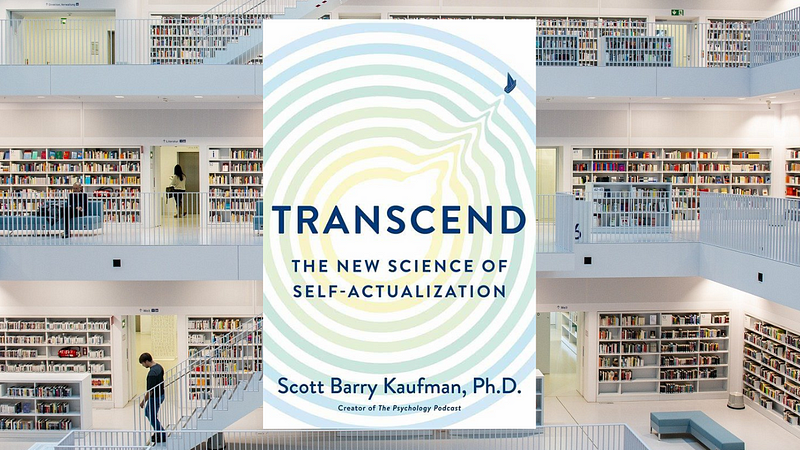The Flaw in Maslow's Hierarchy of Needs: A Deeper Insight
Written on
Chapter 1: Revisiting Maslow's Legacy
Ideas have a way of enduring, and although Abraham Maslow passed away in 1970, his theories have experienced a resurgence, largely due to Dr. Scott Barry Kaufman's innovative work that revitalizes and expands upon Maslow's original concepts for contemporary understanding.
Maslow, an influential American psychologist, is renowned for formulating the well-known hierarchy of needs — the pyramid many of us memorized in our school days. This hierarchy encompasses essential needs such as safety, belonging, and self-esteem, and progresses to higher-level aspirations like exploration, love, and purpose.
However, I, like many others, was led astray. It turns out Maslow never envisioned his theories as a pyramid! This notion was actually introduced by a marketing strategist in the 1960s, though the specifics of this account remain murky.
As Maslow neared the end of his life, he was developing groundbreaking ideas, and this is where Dr. Kaufman’s remarkable book comes into play. It was one of my standout reads from 2020, profoundly impacting me and leading me to recommend it frequently.

In Transcend, Dr. Kaufman reveals that until his last days, Maslow was expanding his renowned concepts about self-actualization and self-expression into the realm of transcendence, emphasizing our interconnectedness as human beings on this planet.
This vision is grand, and as indicated by an excerpt from an unpublished draft of what could have been Maslow’s next book, The Possibilities for Human Nature, he held a remarkably high view of humanity:
“If I had to condense this whole book into a single sentence, I think I could come close to the essence of it by saying that it spells out the consequences of the discovery that man has a higher nature and that this is part of his essence. Or more simply, human beings can be wonderful out of their own human and biological nature...”
If someone as intellectually esteemed as Maslow saw such potential and goodness in humanity, then surely we must be remarkable!
Throughout Transcend, Dr. Kaufman portrays a man captivated by the possibilities for human development and flourishing. He inspires us to strive to be better than we currently are.
Today, we’ll delve into Dr. Kaufman’s alternative metaphor for human needs and ambitions — a sailboat. We will also explore the 13 sources of well-being, the 10 characteristics of self-actualization, and 15 additional key ideas that enhance our understanding of this remarkable individual who believed so deeply in human potential.
Transcend incorporates the latest findings in humanistic psychology and draws extensively from unpublished journals and manuscripts, shedding new light on Maslow's ideas.
Most importantly, we will discover where Maslow misjudged the rarity of self-actualization and transcendence.

Chapter 2: A New Metaphor for Human Needs
In Transcend, Dr. Kaufman presents an alternative to the traditional pyramid representing human needs and goals. He suggests that instead of viewing life as a climb up a summit, we should see it as navigating a vast ocean filled with opportunities for discovery, as well as challenges.
The metaphor of a sailboat captures this concept beautifully. Each plank of the boat represents foundational security needs — safety, connection, and self-esteem. These elements protect us against the tumultuous waves of life. Without a sturdy boat, navigating through storms becomes impossible.
Dr. Kaufman encourages us to embrace exploration as the primary driver of growth. While security focuses on protection, exploration is fueled by curiosity and the pursuit of new experiences. The sail of our boat symbolizes the drive to reach higher levels of self-integration and contribute meaningfully to the world.
Now, let’s take a look at a video that explores how productivity routines can enhance our ability to navigate life’s challenges.
In this video, the creator attempts to follow Ali Abdaal's productivity routine, revealing insights into managing tasks effectively while maintaining balance.
Chapter 3: The Need for Connection and Exploration
As we journey through life, it’s important to recognize that our boats should not remain anchored. The essence of living lies in exploration. As the author Henry James stated, “Live all you can; it’s a mistake not to.”
Dr. Kaufman emphasizes that once we build our boats — ensuring our security needs are met — we must set sail. To explore, we need to open our sails, embracing the uncertainties and opportunities that life presents.
In doing so, we may experience transcendent moments that elevate our existence. Our openness not only enriches our own journey but can also uplift others.
Let’s now watch another video that showcases a personal journey of success in the legal field.
This video shares insights on excelling in advocacy exams, illustrating the journey of someone who ranked first in the UK Bar Training Course, providing inspiration for those navigating their own paths.
Chapter 4: The 13 Sources of Well-Being
Dr. Kaufman identifies 13 essential sources of well-being frequently highlighted in psychological literature. These include positive emotions, life satisfaction, mastery, autonomy, and more.
Maximizing these elements may not erase the inherent challenges of life, such as pain and suffering, but they can significantly enhance our overall happiness and fulfillment.
As we reflect on these sources, it’s essential to understand that a healthy personality thrives on growth, self-awareness, and purpose, rather than mere status or achievement.
Chapter 5: The Journey Towards Self-Actualization
Self-actualization is not a destination but an ongoing journey. It requires opening ourselves to new experiences while helping others do the same. This dynamic interplay fosters genuine connections and enriches our lives.
In conclusion, understanding Maslow's theories through the lens of Dr. Kaufman’s work offers a more nuanced perspective on human potential. By embracing these concepts, we can navigate the complexities of life with resilience and purpose.

NOTE: This content originally appeared on the Stairway to Wisdom, a premium newsletter offering in-depth book breakdowns and insights. Join us for a free trial to explore more.